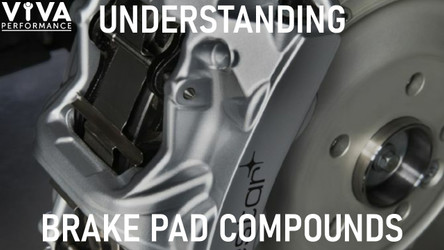Understanding Different Types of Brake Pads
Posted by Max Rundlett on 13th Nov 2020
Have you ever looked at your wheels and noticed them covered in a dark dust? Do your brakes squeak when you hit that middle pedal? Have you noticed your stopping power decrease the more you drive? If any of this applies to you, it may be a side effect of your brake pads. Today, we explore the different types of brake pad compound and which type is best for you.
Non-Metallic and Organic
This is the softest type of brake pad composed of rubber, glass, and other natural materials. The softer the compound, the more wear and subsequently more brake dust. This type of compound makes up many of the brake pads found in commuter cars. With the pads being so soft, they have a limited heat threshold lower than other compounds. Once this threshold is reached, the brake pedal can begin to feel mushy.
Semi-Metallic
Semi-Metallic brake pads are made up of a blend of metals and organic materials. These pads are also commonly used on many newer models from the factory, and provide a higher heat capacity than organic pads, reducing fade. Semi-metallic pads are of a harder material so while they last longer, they also require more force on the pedal to produce the same bite as organic pads. Many OEM Volvo brake pads are made up of a semi-metallic compound.
Ceramic
A blend between non-metallic and semi-metallic, ceramic brake pads offer longevity similar to semi-metallic pads and the bite of non-metallic. These pads are highly regarded for street-use applications, however do not work well in high-heat scenarios so it is advisable to steer clear of ceramic for track set-ups. Due to their blend of clay and copper fibers, these pads are quiet and comfortable. The brake dust made by ceramic pads is easy to clean and much more minimal than a semi-metallic or non-metallic alternative.
Metallic
These are the most aggressive pads out there and typically only used for track applications as they have a very high heat threshold and require high temperatures to operate efficiently. Metallic pads are very abrasive to rotors, and are also the noisiest out of the other compounds mentioned.
If you’d like help in choosing which brake pads are right for you and your driving style, be sure to shoot us an email, we’re happy to help!






